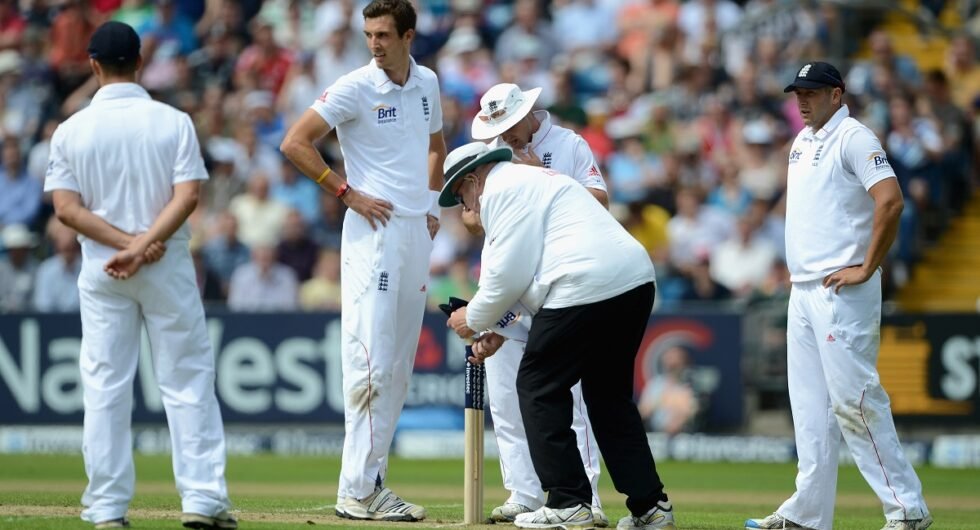Finn’s Law: How a bowler’s stump-hitting habit led to a change in cricket’s rulebook

 by Abhishek Mukherjee
by Abhishek Mukherjee
@ovshake42 5 minute read
Steven Finn had the habit of brushing against the stumps at the non-striker’s end while running in to bowl. In 2013, that prompted a change in the Laws of Cricket.
England’s bowlers had found the goings tough for nearly two weeks. England had made 385 at The Oval and had South Africa at 1-1, but could strike only once more over the next 13 hours and 10 minutes as South Africa declared on 637-2.
Graeme Smith (131) and Jacques Kallis (182 not out) both piled runs, but the star was Hashim Amla, whose unbeaten 311 remains the only triple-hundred for South Africa in Test cricket. England crashed to an innings defeat.
The Headingley Test match began in similar fashion as Alastair Cook dropped Alviro Petersen, the man who had missed out at The Oval, off James Anderson.
England had picked Steven Finn for the second Test ahead of Graeme Swann, and went in with an all-pace attack. In his first over, Finn had –almost like clockwork – knocked his leg against the stumps at the non-striker’s end twice. Umpire Steve Davis had chosen to overlook them.
Now, in his second over, Finn had Smith caught at slip. England did not celebrate, because they had heard Davis’ call for dead ball: Finn had brushed against the stumps again.
Davis had invoked Law 23.4(b)(vi), which enabled him to call a dead ball if the striker was “distracted by any noise or movement or in any other way while he is preparing to receive, or receiving a delivery”.
The decision raised a few eyebrows, not because Davis had ruled a dead ball but because he had not called Finn earlier in the innings, but this was different: Davis dead-balled Finn for kneeing the stumps only after Smith had had a word with him.
Had Davis warned Finn? “It was frustrating for us because the umpire didn’t warn us,” quipped Anderson, but AB de Villiers insisted “Smith and Alviro made the point between balls, Steve said there was going to be a warning.”
“England were disgruntled, but they might have wondered instead why Finn had not ironed out a long-standing quirk,” summarised Lawrence Booth in his Wisden Almanack report.
South Africa went to lunch at 84-0. Finn began after lunch, and Smith cover-drove the third ball for four, but the umpires called dead ball yet again.
The MCC defended Davis in a press release during the day’s play: “Of course, what the umpire feels is distracting to the batsman is entirely subjective, but Davis was within his rights to signal dead ball if he was sure that Smith was indeed distracted.”
Finn was almost certainly the first bowler to be dead-balled for the specific offence in Test cricket. Earlier in 2012, the umpires had done the same to Peter Turnbull of Cambridge MCCU during their match against Lancashire.
Not too long afterwards, the MCC recommended a change in the Laws, which the ICC echoed in its Playing Conditions. In early April 2013, the ICC announced that the change from the 30th of the same month.
Law 21.6, in its current form, “either umpire shall call and signal No ball if the bowler breaks the wicket at any time after the ball comes into play and before completion of the stride after the delivery stride.”
Finn might have quit cricket, but he has indeed left a legacy.

